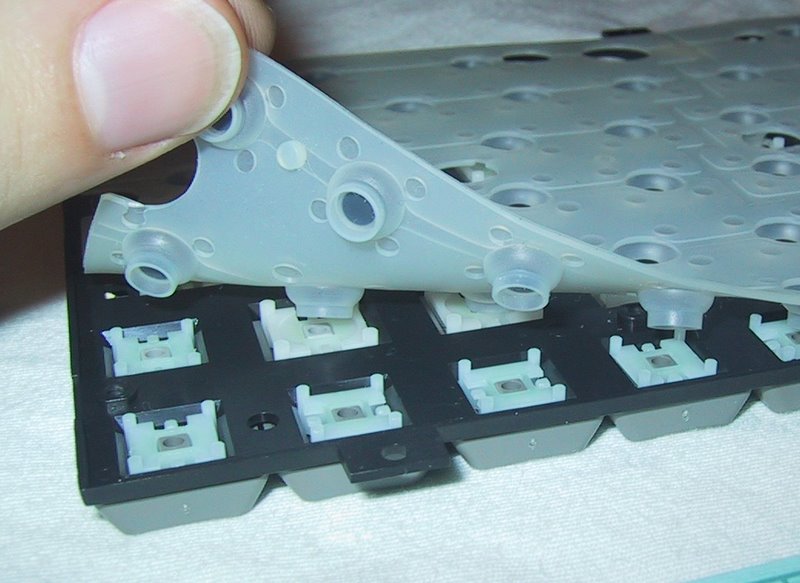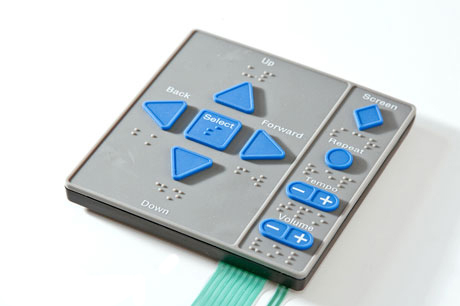Discover Exactly How Membrane Switches Function and Their Role in Modern Electronics
Membrane Switches represent an innovative assimilation of modern technology and style within the world of contemporary electronics, serving as important user interfaces in many devices. Included several layers, these switches use pressure-sensitive devices to assist in individual communication. Their applications span different industries, from consumer electronic devices to medical equipment, highlighting their convenience and importance. Recognizing the complexities of Membrane button functionality and their broader ramifications in improving individual experience welcomes additional exploration right into their design, advantages, and the innovative advancements shaping their future in innovation.
What Are Membrane Switches?

Membrane buttons are distinguished by their sturdiness and resistance to ecological elements, such as dirt, moisture, and severe temperatures. They can be customized with various graphics, colors, and responsive comments choices, enhancing customer experience while keeping visual appeal - membrane switches. The incorporation of printed circuits permits for seamless assimilation into devices, boosting general capability.
The convenience of Membrane buttons appears in their ability to sustain both basic and complex control features. They can incorporate functions such as LED indications and touch-sensitive modern technology, dealing with particular individual demands. As innovation continues to evolve, Membrane Switches stay crucial for allowing reliable and user-friendly individual interfaces, consequently playing a crucial function in the advancement of contemporary digital devices.
Parts of Membrane Buttons
Membrane buttons are made up of a number of vital elements that collaborate to create a dependable and practical interface. The main aspects consist of the visuals overlay, adhesive layer, spacer layer, and conductive traces.
The graphic overlay works as the customer interface, typically published on an adaptable substrate such as polyester or polycarbonate. This layer not just supplies visual appeal but additionally includes responsive comments, aesthetic hints, and safety functions. Below the graphic overlay exists the glue layer, which secures the switch to the tool and makes certain toughness against environmental tensions.
The spacer layer is vital for keeping the needed space in between the visuals overlay and the circuit layer. When stress is used, this gap permits for the activation of the button. The conductive traces, generally made from silver or carbon, develop the electrical paths that finish the circuit when the switch is engaged.
Additionally, a support layer might be included for architectural support and insulation. These parts collaborate perfectly, guaranteeing that Membrane switches are both user-friendly and durable, making them crucial in numerous modern-day digital applications.
Just How Membrane Switches Work
How do Membrane Switches function properly within electronic tools? Membrane Switches operate the principles of pressure-sensitive modern technology, utilizing a layered construction that includes visuals overlays, sticky layers, and conductive aspects. When a customer applies pressure to the button, the leading layer deforms, permitting the conductive elements below to make get in touch with and finish an electric circuit. This activity activates the desired function within the device.
The layout of Membrane switches is critical for their reliable procedure (membrane switches). The layers are meticulously engineered to provide tactile feedback, toughness, and resistance to environmental factors such as dampness and dirt. The inclusion of domes-- tiny, elevated areas within the switch-- improves tactile action, providing individuals with an obvious click experience upon activation
Furthermore, Membrane buttons can be tailored in terms of size, form, and graphics, making them ideal for numerous applications. They are typically made use of in control panels, clinical tools, and customer electronic devices because of their streamlined design and reliability. Generally, the efficient performance of Membrane buttons is critical in enhancing customer communication and making sure smooth procedure in modern-day electronic tools.

Applications in Modern Devices
Utilizing their one-of-a-kind layout and functionality, Membrane buttons have actually come to be essential components in a large range of contemporary electronic gadgets. These flexible interfaces are used in consumer electronics, commercial devices, clinical tools, and automotive controls, offering seamless user interaction.
In customer electronic devices, Membrane buttons are generally located in devices like microwaves, cleaning machines, and various other household tools, where they enable instinctive control with a streamlined account. Their inconspicuous style assists in combination right into compact devices, improving visual allure without jeopardizing capability.
In redirected here commercial applications, Membrane Switches function as control panels for machinery, using sturdiness and resistance to rough atmospheres. Their capacity to hold up against wetness and pollutants makes them suitable for usage in production and handling industries.
Clinical gadgets additionally gain from Membrane buttons, which are made to be very easy to clean and maintain, making certain health in clinical settings. They are frequently used in analysis equipment, person monitoring systems, and mobile clinical tools, where integrity is extremely important.
Advantages of Membrane Buttons
Among the vital advantages of Membrane switches is their convenience, which allows them to be tailored for a range of applications throughout several industries. These switches can be created in different sizes and shapes, suiting special product demands while giving seamless integration into devices. Their thin account allows a small and sleek style, usually improving the visual charm of electronic products.
Another significant benefit is their durability - membrane switches. Membrane switches are generally resistant to dirt, wetness, and chemicals, making them suitable for severe environments. This strength expands their life expectancy compared to conventional mechanical buttons, decreasing the need for frequent replacements
Additionally, Membrane Switches offer cost-effectiveness. The production procedure entails printing innovations that minimize i thought about this production expenses, especially for big runs. This cost, incorporated with reduced maintenance requirements, makes them an eye-catching alternative for use this link producers.

Final Thought
Finally, Membrane Switches represent a significant development in interface innovation within contemporary electronic devices. Their layered building and construction, pressure-sensitive procedure, and adaptability to numerous applications underscore their value across several markets. The durability and ecological resistance of Membrane Switches further improve their appeal, making them a preferred selection for suppliers seeking customizable and trustworthy options. As the need for resilient and instinctive interfaces remains to expand, the duty of Membrane buttons fit user experience will undoubtedly expand.
Membrane Switches represent an advanced integration of modern technology and style within the world of contemporary electronics, serving as essential user interfaces in various tools.In the realm of modern-day electronics, Membrane Switches offer as crucial parts that assist in customer interaction with tools. As technology proceeds to evolve, Membrane Switches remain crucial for enabling reliable and intuitive individual interfaces, thereby playing an essential duty in the development of modern-day digital devices.
Exactly how do Membrane Switches function successfully within digital devices? Generally, the reliable functioning of Membrane buttons is critical in improving user interaction and making certain seamless operation in contemporary digital tools.